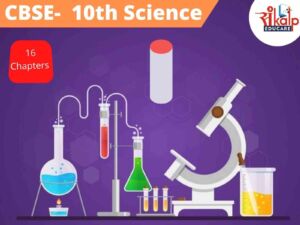Cell – The unit of Life.
Introduction: All the life activities of an Organism are present in the miniature form in each and every cell of its body. The process of cell specialization for one or more distinct functions like a contraction, nerve conduction, secretion, absorption etc, (called cell differentiation,) leads to the structural and morphological modification accompanied by biochemical changes. Thus, the cell is a Basic Unit of life. If it is considered as the structural and functional unit of Life.
The first living cell was seen under a microscope by Dutch discoverer Leeuwenhoek.
The body of all living organisms except viruses has cellular organization and may contain one or many cells. The organism composed of a single cell is called a unicellular organism. (e.g. bacterial, blue-green algae etc) . The organism having cells are called multicellular organisms (e.g. Plants and animals).
Robert Hooke (1632- 1703) used the word cell during his description of the structure of cork. He used the word cells for the hollow cavities in the section of cork and his observations about cells were published in Micrographic. At the beginning of the 19th century, it was realized that these cavities contained living substances.
In 1835 Dujardin Described the contents of the cell by the name designated the sarcode. Subsequently, J.E Purkinje (1839) & H. Von Mohl (1838) designated the sarcode of Dujardin as protoplasm which means the primary substance.
IN 1838 a Garman botanist Malthias Jacob Schleiden (1804-1881) put forth the idea that cells were the unit structure in the plants whereas his coworker Schwann Applied Schleiden thesis to the animals in 1839. Then they compared their finding and formulated cell theory and postulated that cell is the basic unit of structure and function in all living organisms.
Cell theory states that all living matter from the simplest of unicellular organisms to very complex higher plants and animals, is composed of cells and that each cell act independently but functions as an integral part of complex organisms. Robert Brown discovered the presence of a nucleus in the cell.

Microscope and cell by Sankalp educare.
The cell theory was extended and redefined further. It was further modified in the light of Virchow’s finding (1855, 1858) that cell develops from pre-existing cells- Omnis cellula-e- cellula. It s known as the law of Cell Lineage. The finding gave cell theory its final shape.
The cell theory or cell principle or cell doctrine s presently formulated. States that –
- All living things; animals, plants and bacterial (Viruses are excluded) are composed of cells and cell products.
- The new cells are formed by the division of pre-existing cells.
- There are fundamental similarities in the chemical constituents and metabolic activities of all cells.
- The activity of organisms as a whole is the sum of the activates and interactions of their independent cell units.
- Cells are hereditary units(this maintenance continuity through the hereditary material).
- Basically, the cells are totipotent ( i.e. a single cell can give rise to the whole organisms) unless and until they have become extremely specialised.
Excepting to cell theory :
Examples that do not fit easily in these parameters of true cells are:
- Virus Since they lack a plasma membrane and metabolic machinery for energy production and for the synthesis of proteins.
- Some tissues (connective tissues) have a good deal of non-living materials.
Conclusion: This is the basic theory and history of Cell Identification of Cell Principles.
types-of-cell 👉🏻
: types-of-cell 👉🏻 https://sankalpeducare.com/science/types-of-cell/





 Total Users : 8538
Total Users : 8538

















Leave A Comment
You must be logged in to post a comment.